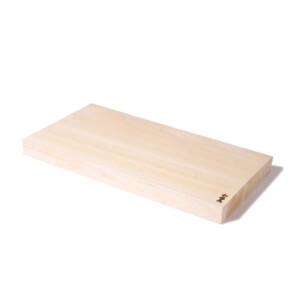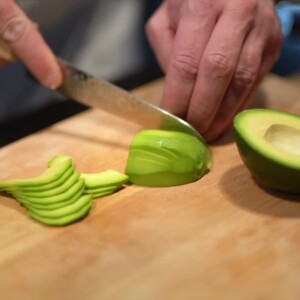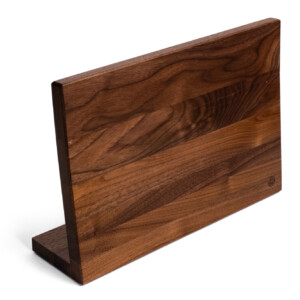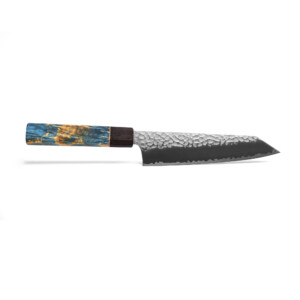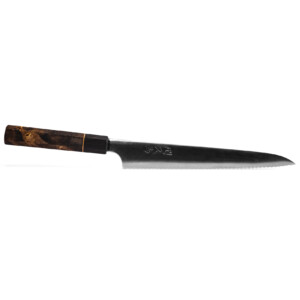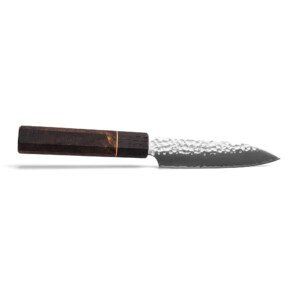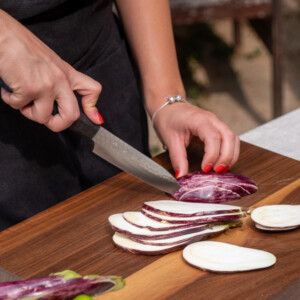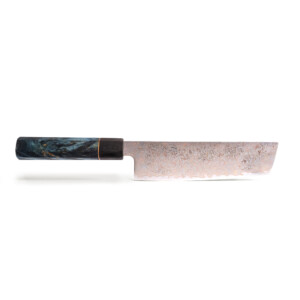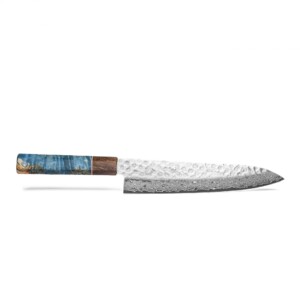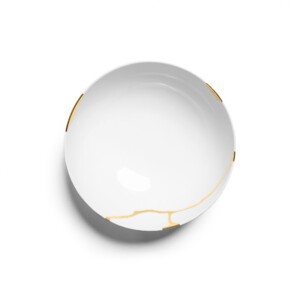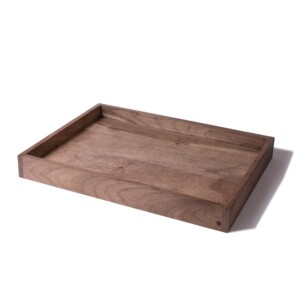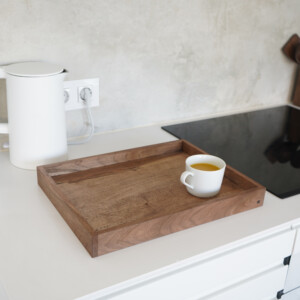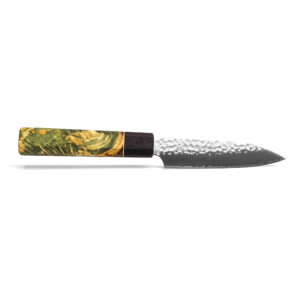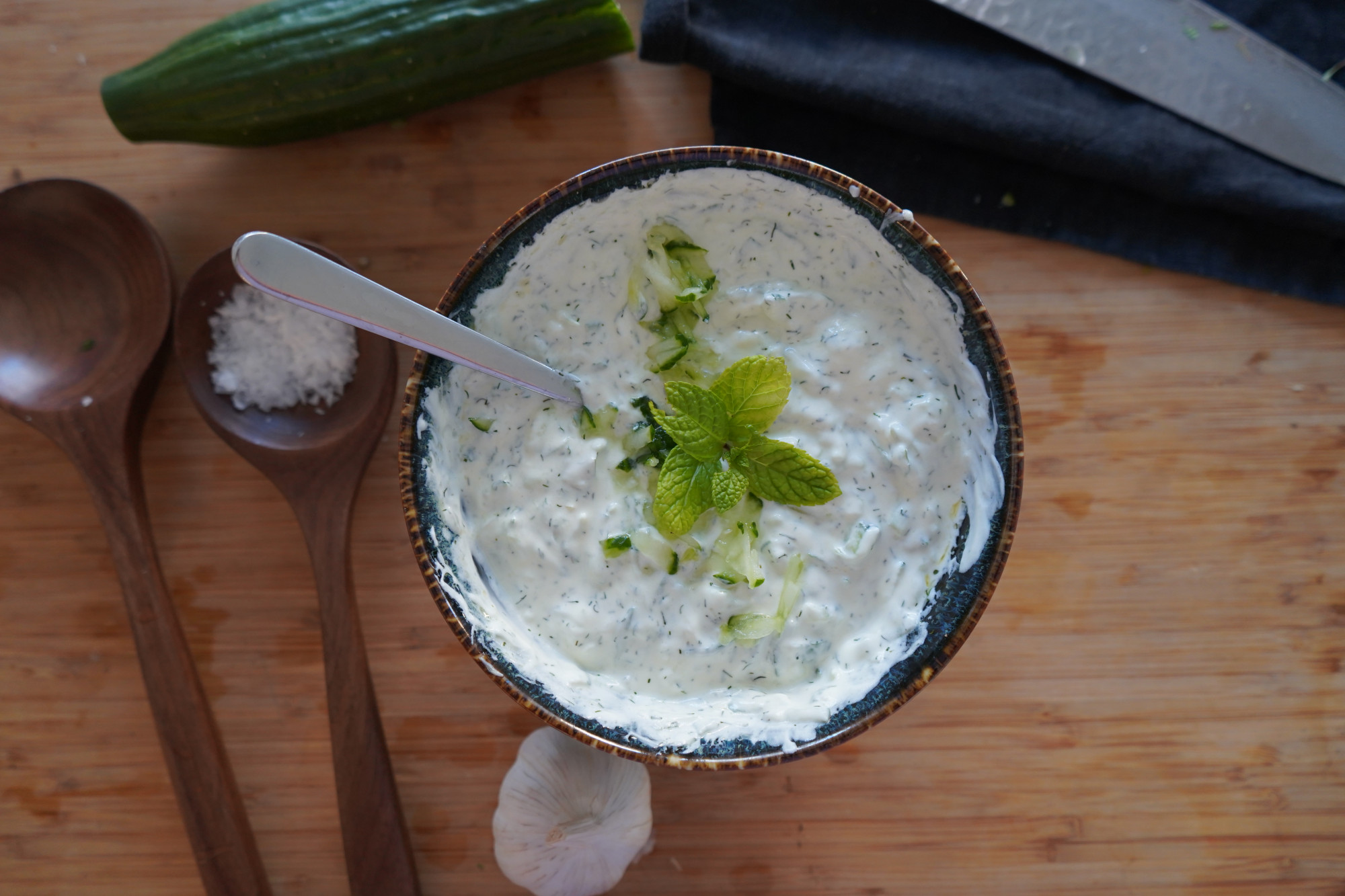How do you cut a pomegranate using a knife without making a mess? Pomegranate is a beautiful fruit, with shiny red “jewels” called arils inside, containing sweet, juicy nectar that surrounds a white seed in the middle. They are a very tricky fruit to cut. The juice from any broken seeds can stain your clothes, skin, and almost anything it touches. While opening a pomegranate and freeing the jewels from the fruit may seem like a hard work, you might be making it even more difficult by spitting out the seeds (pomegranate seeds can be eaten – and they are good for you, too!). Yet, once you learn how to cut and open a pomegranate it will be an easy, quick and mess-free process.
The tools needed to cut a pomegranate are:
- are a paring knife,
- a cutting board,
- and a large bowl to hold all the seeds.
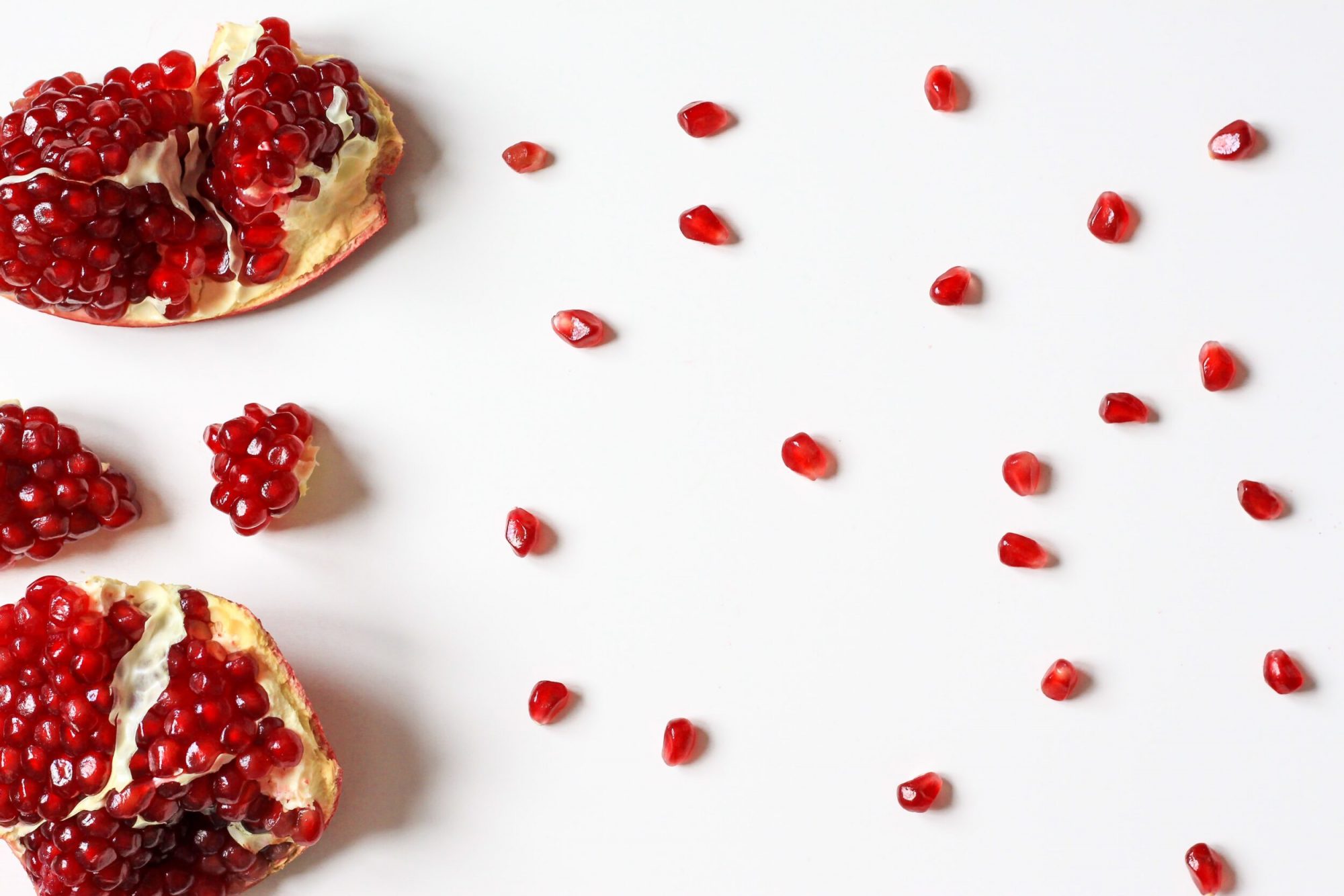
Step 1: How to pick the perfect pomegranate
Colour is everything. The skin of a ripe pomegranate should be a bright or dark red. The darker and deeper the colour, the sweeter your fruit will be. Lighter colours like pink or salmon usually indicate an underripe and tart fruit. Ripe pomegranates are heavy for their size and tend to have angular sides, rather than being perfectly round. The skin should also be plump and fairly smooth.
Pomegranates that are a smooth sphere are not yet ripe. If you see a crack on a pomegranate, it’s not necessarily a bad thing. As long as the crack is only on the surface and hasn’t gone through the flesh, the pomegranate is still okay. In fact, the skin is expected to crack as the interior ripens and swells with juice. As such, cracks indicate the fruit is juicy and ripe for the picking.
Next, check the size; a heavy fruit means the seeds hold more juice, while a lighter one has seeds which are already dry (over-ripe) or smaller (not ready). Give the pomegranate a firm tap. Ripe fruits will have a hollow somewhat metallic sound. Pomegranates stop ripening as soon as they’re picked so leaving the fruit in a paper bag or out for a few days won’t let them “mature”. Pomegranates should be eaten as soon as they’re picked.
So instead of big box fruit that’s transported from across the country, it’s better to buy yours straight from a local farmer’s market or a produce stand. These vendors are more likely to have freshly picked pomegranates. The best in-season pomegranates are between September and February, and then again from March to May.
Step 2: Choose your weapons: a paring knife

The small size of paring / utility knives make them perfect to cut into a pomegranate. To cut open a pomegranate you just need a sharp paring knife, a stable cutting board, a serving spoon and a large bowl or container to hold all the seeds. A paring knife usually has a blade length of 2 1/2 to 4 inches. This is perfect for stable, deftly cutting through the husk and membrane of a pomegranate. A serving spoon or soup spoon on hand will come handy for hitting the pomegranate husk and shaking out some of the seeds.
Step 3: How to cut the pomegranate peel
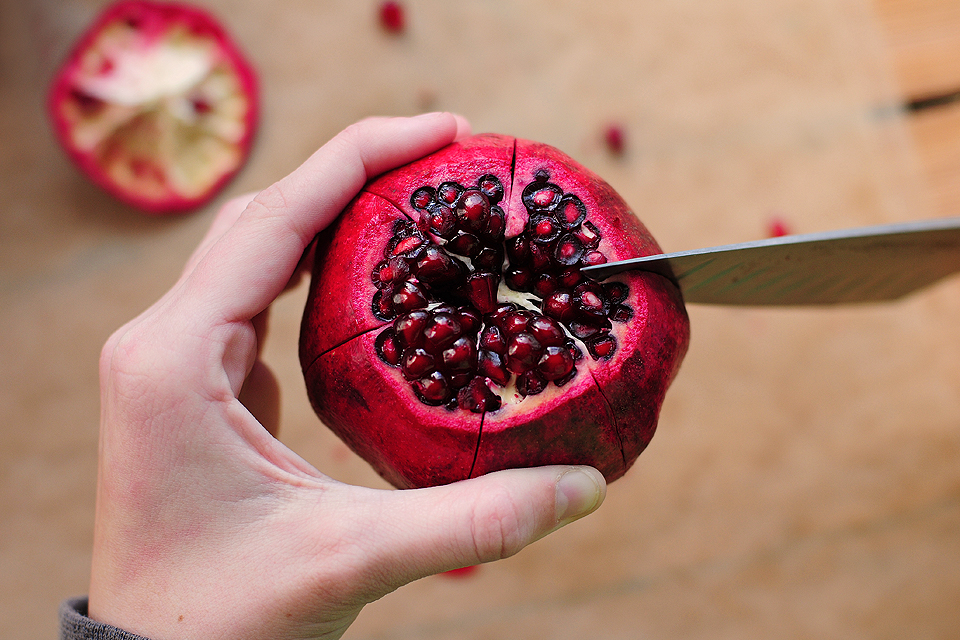
First, you need to break through the tough outer husk. Slice off a sliver from the bottom of the pomegranate. This way, the fruit can stand steadily on top of the cutting board. Then use the tip of the knife to cut around the base of the top crown. Cut about 1/2 an inch deep, just enough to go through the membrane without piercing through the fruit. Dispose the crown.
Next, make shallow cuts from top to bottom all around the whole pomegranate between the ridges. These are where the inner light membranes are. A standard pomegranate should have about six cuts. Next, place your thumbs in the top centre of the pomegranate and gently tear open the fruit. It should come apart easily without spilling the juice.
Step 4: How to deseed the pomegranate
The best way to deseed pomegranate is to tap the husk with a large spoon or using your fingers. Once you’ve broken the pomegranate into segments, the next step is to separate the seeds. There are three ways to do this: the fastest is to hold a pomegranate segment with the seed side down. The seeds should be in the palm of your hand. Hold a large spoon in the other hand and start vigorously tapping the husk. The seeds should start falling into your hand. Do this over a bowl or container to keep the seeds from scattering over the cutting board. Repeat until all the seeds are removed.
Another way to remove the seeds is to place the segments in a bowl of water for a 5-10 minutes. The cold water will help soften the membranes and pith. Then with the pomegranate submerged in the water, use your hands to dislodge the seeds. You can remove clusters at a time, as the seeds will sink to the bottom of the bowl, and the membranes and pith will float to the top. Once all the seeds have been removed, drain the water.
The alternative way is to simply remove the seeds straight from the segments. Turn each segment out, then holding onto the edges, use your thumbs to push the centre of each piece forward. This way you will push most of the seeds out. Do this over a bowl, then use your fingers to remove any seeds left in the membrane. Follow the same steps for the rest of the segments.
A medium sized fruit will yield about one cup of juicy seeds or 1/3 cup of pomegranate juice which can be kept in an airtight container in the fridge for three to four days. If you wish to freeze it, you can keep it for up to three months. As with all fruit, for optimal vitamin benefits, it’s best to enjoy your fresh pomegranate.
What are the benefits of eating pomegranate?
Pomegranate juice contains higher levels of antioxidants than most other fruit juices. It also has three times more antioxidants than red wine and green tea. The antioxidants in pomegranate juice can help remove free radicals, protect cells from damage, and reduce inflammation.
Eating pomegranates as a whole can have anti-inflammatory effects and can protect a human body from various diseases like type-2 diabetes, and obesity. Regular consumption of pomegranate helps in improving gut health, digestion, and keep bowel diseases at bay. Pomegranates are also very versatile. They can be sprinkled on salads and power bowls, used in meat marinades and dips, and added to juice blends. And of course, the fruit is also delicious on its own.
What to serve pomegranate with?
With so many nutritional benefits and a distinct punchy flavour, pomegranates are worth the effort to open. Lacking ideas where to add it?
- Toss them into a green or fruit salad
- Eat them fresh from the fruit
- Sprinkle some seeds onto your yogurt or oatmeal
- Add them to smoothies or juices
- Use pomegranate seeds as a tangy garnish on avocado toast
- Garnish roasted or grilled meat dishes with the tasty seeds
- Add them to sangria, cocktails or mocktails
There you go. As long as you have a good paring knife, cutting board, bowl and spoon, you can start enjoying this amazing fruit. And with just a little practice and patience, you’ll be popping pomegranate seeds in no time.
